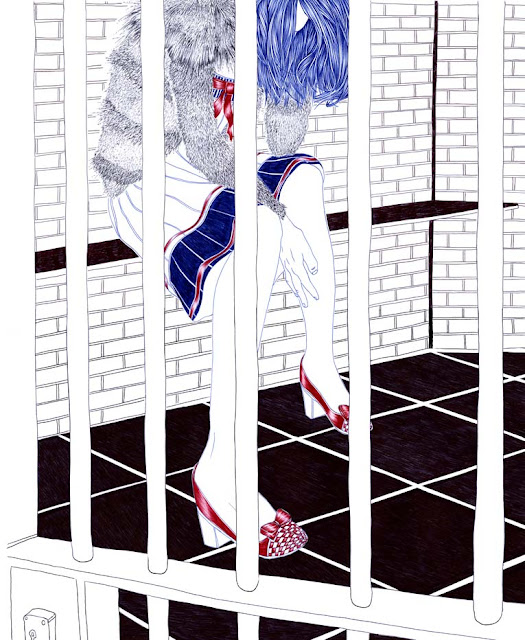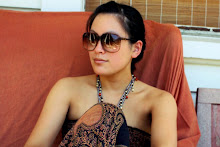I don't think I've ever worked as hard as I'm working right now.
Well. Not right now, since right now I'm clearly procrastinating by writing about how hard I'm working instead of actually working hard. But whatever, I never claimed to tell the truth. Nor am I complaining. In fact, there's something inherently satisfying about working this hard, even though some of that work exists for the sole purpose of letting me have high tea with my two most favourite ladies on a Saturday afternoon.
You pay a price though, and I'm paying it right now. Sitting here, delirious on paracetamol and hot totties, swaying to The Smiths (who are growing on me) like a seventy year-old ex-motivational speaker who lost his hearing in his sixties and his sense of decorum not long after.
Shona's wedding was on the beach and it was beautiful.
I kept getting in the professional photographer's way, and though he was the jolly type I felt a little uncomfortable about trying to elbow my way into the whole 'taking photos' scene so I hid the camera back at the farm, where it didn't emerge again until two am that night when I couldn't find a light and blundered around taking photos so that I could use the flash to find my things.
I stumbled across this amazing photo today (if you click on it - and in fact, any of the photos I post - it'll come up with a larger image) :
I'll admit that I don't read many fashion magazines.
Okay, I don't read any fashion magazines.
Okay, I don't read magazines at all. Thank you, internet.
So I'm hardly an expert when it comes to this sort of thing, true, but Carine Brancowitz's illustrations are striking in their simplicity and in their use of what looks like ballpoint pen (I only say this because it reminds me of Juan Francisco Casas' hyperrealistic illustrations). I love the idea of drawing consumable pieces rather than photographing them in all their tangible glory, filtering them through a medium that can't entirely be trusted.
Lauren Kalman's Blooms, Efflorescence, and Other Dermatological Embellishments depicts dermatological disease using materials traditionally considered beautiful, creating this great dissonance between the viewer's initial disgust and the associated aesthetical appreciation. This is the best kind of art. There's something about human flesh and its deformities that I find infinitely fascinating and I love what she's done here. I've always wanted to create wallpaper in the same vein - imagine running your fingers over encrusted plaster, shaped in the most beautiful patterns but which nevertheless represent all that we seem to find repulsive - I think it'd be great.
From the curator of Anatomy in the Gallery:
In rendering the grotesque and undesirable aspects of actual human skin, Kalman’s jeweled adornments subvert conventional consumer desire for such talismanic commodities, from which buyers and wearers subconsciously seek to appropriate qualities coveted in the imagined “perfect” body. For instance, the artist explains that “gold’s brilliance, indelibility, and unoxidising surface signify beauty, purity, and immortality, qualities that are also desirable in the body,” yet her own pieces, though handcrafted using traditional metalsmithing techniques from gold, silver, and semi-precious stones, instead illustrate the physical body’s susceptibility to disfigurement, contamination, and decay.
Kalman’s photographs document these jeweled lesions and sores—most of which are more prevalent among AIDS patients—in situ on the body of a young, white woman, the stereotypical imaged body of consumer culture and one less often associated with the AIDS virus. This imaged body, which Kalman conceptually aligns with the imagined body, “is stylized, static, and manipulated, often an amalgam of bodily ideals and contemporary aesthetic paradigms.” Although her photographs retain some shock value in their depiction of pierced flesh, they also advertise these perverse piercings as jewelry, transforming them back into objects of desire connected to beauty, status, and wealth through their placement in relation to the romanticized ideal body, thereby dramatizing the corrupt and corrosive nature of consumer culture. However, her representation of disease in the documentary medium of photography, particularly as displayed in the context of a medical museum, simultaneously blurs the boundaries between commercial and medical images of the body.
I have recently discovered, and become enamoured with, Diane Arbus's work:
These shots are from Michael Massaia's Afterlife, which capture the final days of Jersey Shore amusement parks.
On his process:
Well, first, it all starts with capturing the image. I will usually spend a few days walking around the area prior to taking the images. I try to find areas I can sneak into where I won’t be noticed. I still only use large format black & white film because of its superior resolution and dynamic range (especially in highlights). I try to capture most of my images on days when there is little to no wind. I also prefer days that are overcast, so I can get more of an even tonality throughout the entire negative.
I never composite or combine multiple images. Every image is created using one shot/piece of film.
After the image is captured, I develop the negative so it’s fairly low contrast, so I keep that even tonality intact. I then have to create an enlarged negative from the original negative because a platinum print can only be made through a contact printing process.
No enlargers can be used, so your negative must be the size of your final print.
After I create a decent enlarged negative, I then start to work on the paper in which the print will be made on. Finding a good 100 percent rag paper to make a platinum print on can be tough because of the different acidity levels, and different sizing that varies from paper to paper.
After you’ve found a good batch of paper, you then have to mix your chemistry, which you will eventually have to hand-coat onto the paper using either a high quality paint brush or coating rod.
After I coat my paper (I do multiple coatings), the paper is forced dried using a print dryer and the enlarged negative is placed onto the platinum/palladium coated paper and then placed in a device called a vacuum frame which firmly presses the negative and paper together.
The print is then exposed, using a multi-spectrum metal halide lamp. Exposure usually takes 3-5 minutes. I do a large amount of “light dodging and burning” which is a common printmaking technique that allows you to selectively control the lighting throughout the entire print.
Some of this is done on the actual negative, and some is done while the print is being exposed. After the print is finished being exposed, it is developed in different developers, depending on the look you’re going for. After the print is developed, it then has to soak in a series of acid baths (hypo-clearing agent, citric acid, etc.) to remove the excess metal.
Finally, the print is washed for about an hour’.
I love Mark Ryden and I love his latest work the most.
In his hauntingly beautiful and masterfully executed oil paintings, Ryden creates his own contemporary mythologies whose archetypes include fairy tale creatures, historical figures, and pop cultural icons. Seamlessly juxtaposing macabre motifs like meat grinders and disembodied presidents with eye-pleasing ingénues and seductive landscapes, the artist produces a vision of society in which menace and comfort are inseparably interwoven. These labor-intensive canvasses deftly rework centuries of art history, combining the grandeur of Spanish and Italian religious painting with the decorative richness of Old Master compositions and the lush textures of French Neo-Classicism.
The central theme of The Gay 90s: Old Tyme Art Show references the idealism of the 1890s while addressing the role of kitsch and nostalgia in our current culture. "In the modern era, sentimentality and beauty have been disdained in the art world," he explains. "This new work is explores the line between attraction and repulsion to kitsch, and between beauty and banality." Through their visual richness and symbolic complexity, Ryden's infinitely suggestive dreamscapes invite us to enter their world and to indulge our sense of wonder.




































+1971.bmp)
+1971.bmp)
























